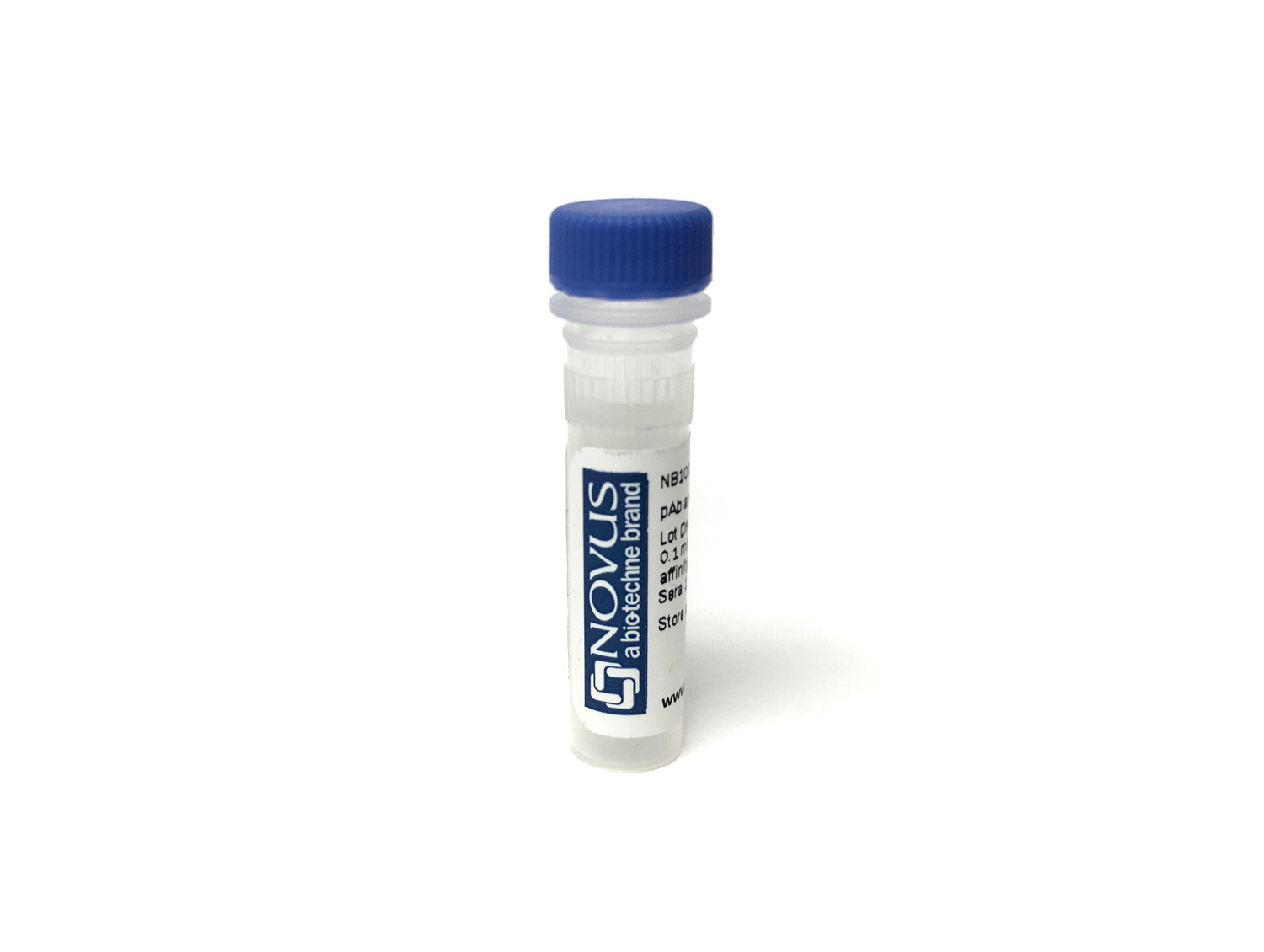IGFLR1/TMEM149 Antibody (905338) [Alexa Fluor® 532]
Novus Biologicals, part of Bio-Techne | Catalog # FAB8296X


Key Product Details
Species Reactivity
Applications
Label
Antibody Source
Concentration
Product Specifications
Immunogen
Met1-Pro163
Accession # Q9H665
Specificity
Clonality
Host
Isotype
Applications for IGFLR1/TMEM149 Antibody (905338) [Alexa Fluor® 532]
Blockade of Receptor-ligand Interaction
CyTOF-ready
Flow Cytometry
Formulation, Preparation, and Storage
Purification
Formulation
Preservative
Concentration
Shipping
Stability & Storage
Background: IGFLR1
IGF-I receptor is a disulfide-linked heterotetrameric transmembrane protein consisting of two alpha and two beta subunits. Both the alpha and beta subunits are encoded within a single receptor precursor cDNA. The proreceptor polypeptide is proteolytically cleaved and disulfide-linked to yield the mature heterotetrameric receptor. The alpha subunit of IGF-I receptor is extracellular while the beta subunit has an extracellular domain, a transmembrane domain and a cytoplasmic tyrosine kinase domain. The IGF-I receptor is highly expressed in all cell types and tissues.
IGF-II R is a type I transmembrane glycoprotein that contains a 2,264 amino acid (aa) extracellular region, a 23 aa transmembrane segment segment and a 124 aa cytoplasmic tail. IGF-II R regulates many diverse biological functions that range from intracellular trafficking to the internalization of extracellular factors and modulation of cellular responses. It delivers newly synthesized M6P-tagged lysosomal enzymes from the trans-golgi network to endosomes, and facilitates the clearance of extracellular lysosomal and matrix degrading enzymes by internalization into clathrin-coated vesicles and delivery into endosomes. With respect to IGF-II biology, It would appear that IGF-II R is principally a regulator of local IGF-II levels, targeting IGF-II for destruction in lysosomes.
The heterotetrameric receptors for insulin (INS R) and IGF-I (IGF-I R) are receptor tyrosine kinases that consist of two ligandbinding alpha subunits and two beta subunits. Ligand binding induces autophosphorylation on multiple tyrosine residues of beta subunits. Phosphorylation of Tyr1162 and 1163 on INS R and Tyr1135 and 1136 on IGF-I R stimulates intrinsic kinase activity.
Long Name
Alternate Names
Gene Symbol
Additional IGFLR1 Products
Product Documents for IGFLR1/TMEM149 Antibody (905338) [Alexa Fluor® 532]
Product Specific Notices for IGFLR1/TMEM149 Antibody (905338) [Alexa Fluor® 532]
Alexa Fluor (R) products are provided under an intellectual property license from Life Technologies Corporation. The purchase of this product conveys to the buyer the non-transferable right to use the purchased product and components of the product only in research conducted by the buyer (whether the buyer is an academic or for-profit entity). The sale of this product is expressly conditioned on the buyer not using the product or its components, or any materials made using the product or its components, in any activity to generate revenue, which may include, but is not limited to use of the product or its components: (i) in manufacturing; (ii) to provide a service, information, or data in return for payment; (iii) for therapeutic, diagnostic or prophylactic purposes; or (iv) for resale, regardless of whether they are resold for use in research. For information on purchasing a license to this product for purposes other than as described above, contact Life Technologies Corporation, 5791 Van Allen Way, Carlsbad, CA 92008 USA or outlicensing@lifetech.com. This conjugate is made on demand. Actual recovery may vary from the stated volume of this product. The volume will be greater than or equal to the unit size stated on the datasheet.
This product is for research use only and is not approved for use in humans or in clinical diagnosis. Primary Antibodies are guaranteed for 1 year from date of receipt.